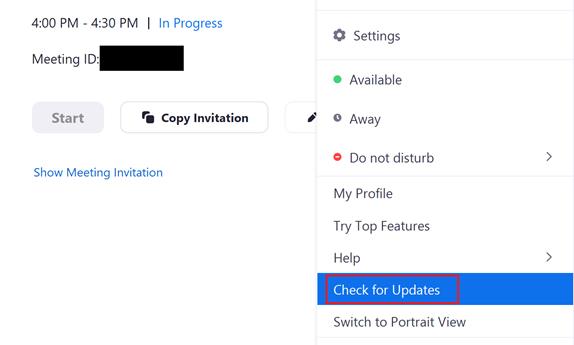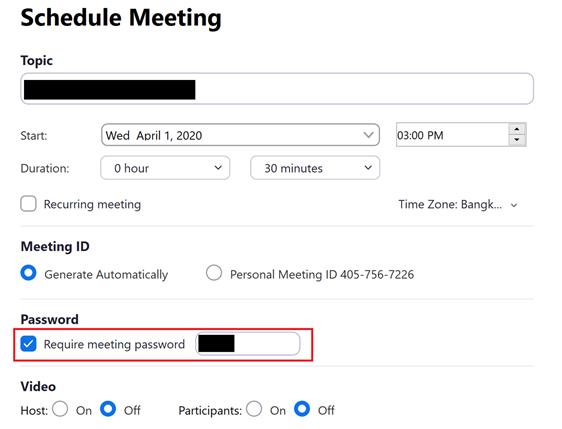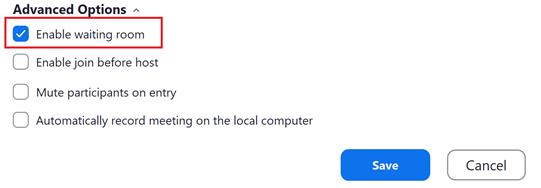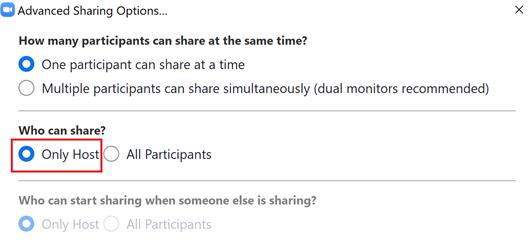how to use Zoom, guide 4 ways to use Zoom safely
With the complicated situation of the Covid-19 epidemic, instead of operating in offices, offices, companies are tending to encourage employees to work remotely. Therefore, online communication platforms have become an essential tool for individuals and businesses to interact and exchange jobs. With a global market share of nearly 20% and over 12.92 million monthly active users, Zoom has become one of the most popular communication platforms used to organize conferences, meetings, meetings. learn etc . online. However, the explosive Zoom comes with the risk that it becomes an attractive target for hackers.

According to a report by Check Point Research, an organization providing information on cyber threats, recent attacks from outside to eavesdrop on meetings, private conversations, . done via the Zoom app, which could potentially result in personal data breach or business espionage.
So how can you enjoy the benefits of Zoom without making yourself the prey of cyber attacks? Here are some tips from experts from Vietnam Internet Security Corporation VSEC.
1. Always update to the latest version
To maintain effective security, the Zoom software must be updated regularly. The updates not only add new options and features, but also fix bugs and fix security holes found from previous versions - such as the ability to eavesdrop on the meetings. counter above.
It should be noted that the opportunity for hackers to attack does not end when the vulnerabilities have been patched, because users who have not updated the new version still exist. Only when users update the software and receive a Zoom patch, threats in the old version can be resolved.

2. Use passwords in meetings
VSEC experts said that for each conference, Zoom will generate an ID of 9-11 characters that are random numbers. With brute force attacks - a technique for testing possible results to detect meeting IDs, hackers can steal IDs easily and infiltrate a conference without the host's knowledge. This attack occurs in the event that the conference does not set a password.
To avoid the above problems, Zoom offers the option to create a password for the meeting. So when strangers know the ID of the meeting, it is still necessary to have a password before joining the meeting.

3. Using the "Waiting room" feature
To ensure that user meetings include only the participants that the host wishes. Zoom adds control of meeting participants - waiting room. After enabling this feature, each new participant will be on standby to allow the host to approve the right to attend the meeting.

4. Manage screen sharing
To give the host more control as well as prevent participants from sharing screens with unwanted content. Zoom has provided the "Only Host" feature in the "Advanced Sharing Options" tab, which means that only the host can share content during the meeting.

In addition to some of the safety tips mentioned above, VSEC experts also recommend that users should be aware of Phishing attacks - disguising reputable individuals and organizations to steal information. your personal.
If you are using Zoom for the first time, make sure you are downloading directly from the zoom.us site, not any other domain (z00m.us, etc.). In addition, users do not download the Zoom software installer through any third party software provider.
You should read it
- How to secure your Zoom account, avoid leaking personal data
- How to install Zoom on a Mac
- This is the greatest danger when working from a distance
- How to sign up Zoom.us learn online for free
- How to use Zoom meeting on phone
- How to delete a Zoom account
- Is it safe to use Zoom? Things to know
- Zoom iOS application was detected sending data to Facebook
May be interested
- This Zoom Mistake Is Ruining Your Photos
 modern smartphone cameras are powerful tools, but to get clear, high-quality results, you should know how to use them properly.
modern smartphone cameras are powerful tools, but to get clear, high-quality results, you should know how to use them properly. - How to change name on zoom
 your name in zoom can sometimes be incorrect and participants are free to make name changes on their zoom. this is done very simply on both computers and phones.
your name in zoom can sometimes be incorrect and participants are free to make name changes on their zoom. this is done very simply on both computers and phones. - How to sign up Zoom.us learn online for free
 zoom.us is a web version of zoom software on computers, supports online learning via zoom and users who register an account on zoom.us.
zoom.us is a web version of zoom software on computers, supports online learning via zoom and users who register an account on zoom.us. - How to use filter on Zoom, turn on the filter for Zoom
 new zoom feature filters for the video screen to change the look of the online learning screen on zoom, along with many filters for our faces to use.
new zoom feature filters for the video screen to change the look of the online learning screen on zoom, along with many filters for our faces to use. - Zoom crashes on Windows 10, causes and fixes
 in some cases, zoom can take up high cpu and ram, leading to slow performance of windows 10 computer and unable to respond to the program.
in some cases, zoom can take up high cpu and ram, leading to slow performance of windows 10 computer and unable to respond to the program. - 4 ways to enlarge photos in Photoshop
 if you're a beginner, users need to know how to do all kinds of zooms in and out of photoshop that can increase productivity. do it with these handy zoom tips and tricks in photoshop.
if you're a beginner, users need to know how to do all kinds of zooms in and out of photoshop that can increase productivity. do it with these handy zoom tips and tricks in photoshop. - How to zoom in maps, images in PowerPoint
 when you present a powerpoint slide, you'll need to zoom in on a detail to emphasize that detail, or to let others see it clearly. you can zoom in on an image, or even part of the map.
when you present a powerpoint slide, you'll need to zoom in on a detail to emphasize that detail, or to let others see it clearly. you can zoom in on an image, or even part of the map. - How to zoom in and out (Zoom) in Photoshop
 how to zoom in and out (zoom) in photoshop. when editing photos in photoshop surely we will have to use image zoom tool to be able to edit the details in the image in the most accurate way.
how to zoom in and out (zoom) in photoshop. when editing photos in photoshop surely we will have to use image zoom tool to be able to edit the details in the image in the most accurate way. - How to change Host classroom online on Zoom
 the online classroom host on zoom is the creator of the classroom. and this host right can be transferred to others as needed.
the online classroom host on zoom is the creator of the classroom. and this host right can be transferred to others as needed. - Zoom application alternatives
 the following article will list some of the applications that can be used instead of zoom. it is worth noting that all these options are available in the free version.
the following article will list some of the applications that can be used instead of zoom. it is worth noting that all these options are available in the free version.










 GPU rental service - The preeminent solution for professional 3d artists
GPU rental service - The preeminent solution for professional 3d artists 5 things to do right on your computer to effectively start your time at home
5 things to do right on your computer to effectively start your time at home Compress and discharge compressed data directly on iPhone to reduce data storage capacity
Compress and discharge compressed data directly on iPhone to reduce data storage capacity Microsoft has just free Teams team software, and these are features to be aware of
Microsoft has just free Teams team software, and these are features to be aware of How to install and use Apple's Notes application on Windows 10
How to install and use Apple's Notes application on Windows 10 Instructions on how to maximize laptop power on Windows 10
Instructions on how to maximize laptop power on Windows 10